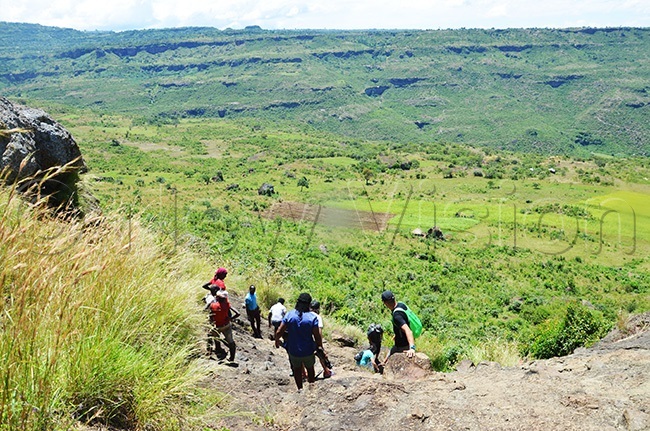Tracing Sebei people back to the Caves
CULTURE |
Living on an area of approximately 1,730km on the slopes of Mt. Elgon in the eastern part of Uganda, the Sabiny are estimated to be 300,000 persons in number.
They occupy districts of Kapchorwa, Bukwo, and Kween, which districts border Kenya which is home to six million Kalenjin, a large ethnic group to which Sabiny belong.
Also known as the Sebei people, the tribe speaks a Nilotic language similar to that of their counterparts in Kenya and Sudan.
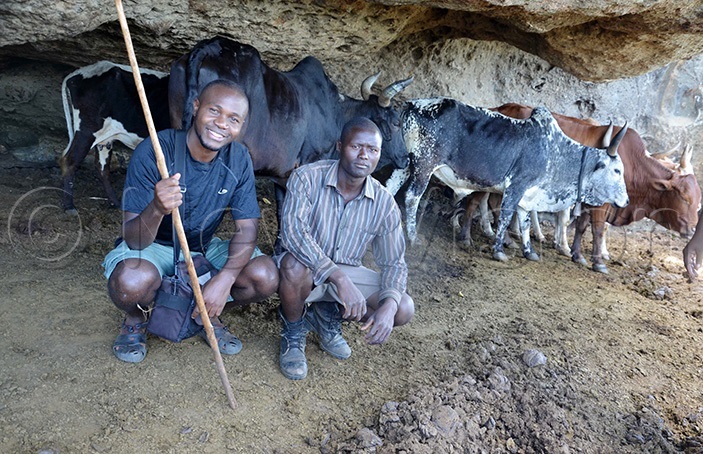
Journey to Sebei region
From Kapchorwa town where we had slept the previous night, we embarked on a journey to Kween district where we had been tipped to find some of the rocks and caves portraying how Sebei people used to live before modern civilization.
Although it was a distance of less than 30km, it took us several hours to find one of such caves. The curves and steep terrain dictated that vehicles go slow until the road could no longer serve the vehicles.
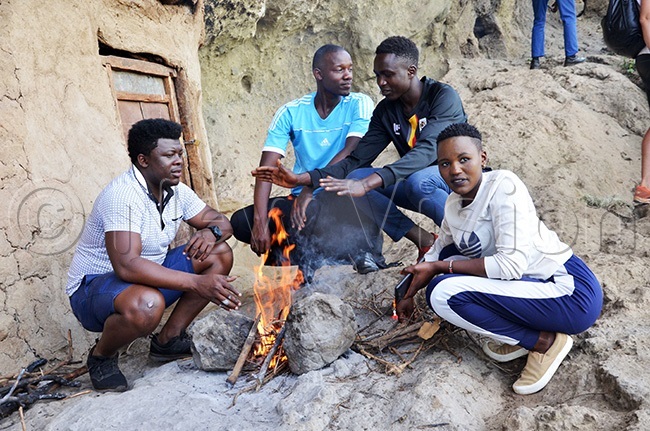
An exhilarating trek through hilly grassland
Leaving the vehicles stuck where they could not pass, it was rewarding on the other hand, to walk the remaining journey to the caves.
The moist-blowing wind kept the day chilly, which helped cool off the heat every single minute. Walking through short grasses on a plateau could enable our sight to distant places as far as the Kenya-Uganda border, Karamoja region, refugee settlement camps, Kidepo national park, and Pian Upe game reserve, among other scenic features.
The beautiful gesture of people whom we found on the way; who kept waving with all smiles as if cheering us. Children in the community kept on following the trek until they fell off one by one.
Passing by some people cultivating their gardens while others herding cattle, teens could be seen winnowing grain. It was favourable weather, climate, and topography for every single activity carried out in this area.
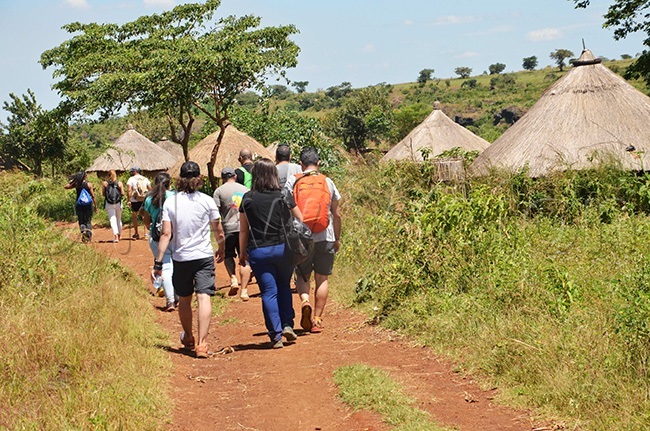
Caves and rocks
One hour or so, into our walk, we met Nelson Chemtai who was living beneath a rock boulder from where he had established a permanent residence with his cattle.
The rock boulder had a cave which continued inside where the herder continues to stay. Though astonishing to us, it was 'normal' for the locals; for this is their background.
Chemtai explained that their tribe often suffered from raids by cattle-wrestlers especially from Karamoja region. "By keeping our herds in caves, was giving them a safer haven from wrestlers," explained Chemtai. Another family was seen boiling tea outside their cave as goats and cows went about grazing freely.
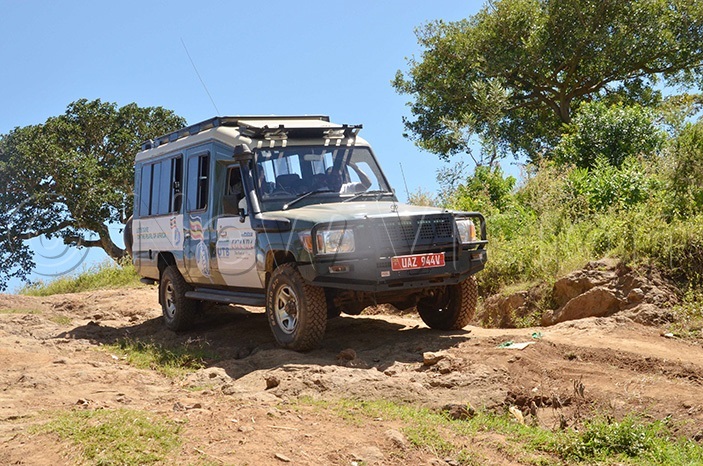
Come in modernity
However, we were also alive to the fact that most of the Sebei people had moved out of the caves and adopted the construction of thatched houses, some powered by solar energy while others had tapped onto the hydroelectricity line which was extended by the government. Though with poor structures, some schools, churches, and granaries could be spotted in the area.
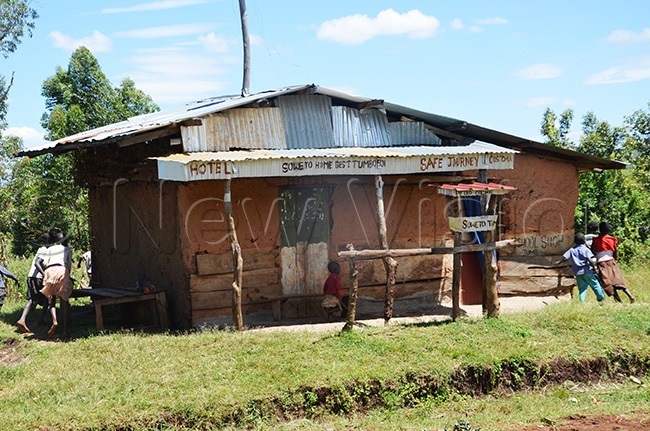
Circumcision
Synonymous with the Sebei people, is the male and female circumcision as the two genders are transitioning into adulthood.
Boys generally undergo the initiation at 18 to 20 years while girls, a couple of years younger. Girls' circumcision involves the severing the whole labia minora. There follows minor ceremonies of shaving, painting, and partial release from seclusion tabus.
The cycle culminates with the second major ritual events, allocating the initiates to their appropriate age-sets and signaling their re-entry into the normal activities of the society.
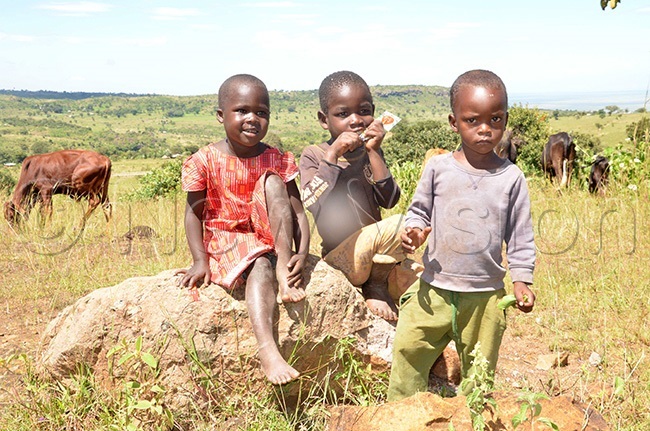
Although many Civil Society Organisations (CSOs) and Non-Government Organisations (NGOs) continue to preach against the vice, it is still practiced in different communities, according to Shadrack Chebet, a resident in the area.
He contends that the norm is still practiced in deeper communities where CSOs and NGOs don't reach. "There are so many people inside there, who have never seen even a single road in their lives, save for some pathways. They fall for anything that culture dictates," intimated Chebet.
